A) ![]()
B) ![]()
C) ![]()
D) ![]()
E) ![]()
Correct Answer

verified
Correct Answer
verified
Multiple Choice
What is the product of this reaction? 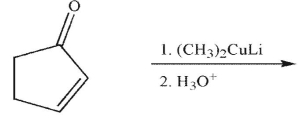
A) ![]()
B) ![]()
C) ![]()
D) ![]()
E) ![]()
Correct Answer

verified
Correct Answer
verified
Multiple Choice
What is the product of the reaction conditions shown? 
A) ![]()
B) ![]()
C) ![]()
D) ![]()
E) ![]()
Correct Answer

verified
Correct Answer
verified
Multiple Choice
Which of the following is the correct product of the reaction sequence shown? 
A) ![]()
B) ![]()
C) ![]()
D) ![]()
E) ![]()
Correct Answer

verified
Correct Answer
verified
Essay
Predict the product of the reaction sequence shown. 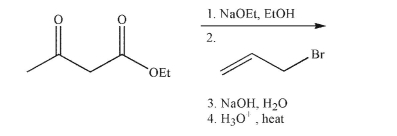
Correct Answer

verified
Correct Answer
verified
Essay
Show the mechanism of the following reaction.
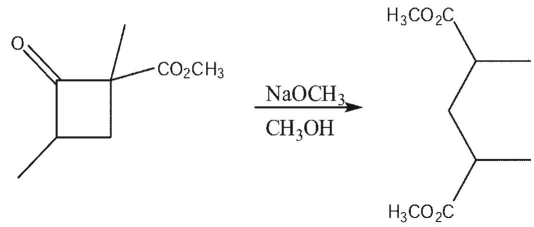
Correct Answer

verified
Correct Answer
verified
Essay
Halogenation at the α position of carbonyls can be performed in acidic or basic conditions, but with different results.In acidic conditions, the reaction stops at the monohalogenated product, but under basic conditions, additional halogenations occur.Explain.
Correct Answer

verified
In acidic conditions, the reaction goes ...View Answer
Show Answer
Correct Answer
verified
View Answer
Essay
Devise a multistep synthesis for the following transformation. Show the reagents needed for each step and the product of each step. Do not draw any mechanisms.
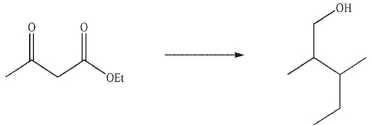
Correct Answer

verified
Correct Answer
verified
Multiple Choice
Rank the circled protons in the following compounds from least acidic to most acidic: 
A) ![]()
B) ![]()
C) ![]()
D) ![]()
E) ![]()
Correct Answer

verified
Correct Answer
verified
Multiple Choice
Predict the major organic product of the following reaction. 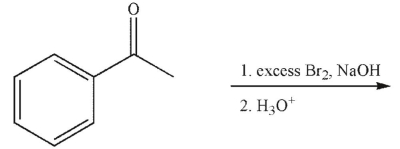
A) ![]()
B) ![]()
C) ![]()
D) ![]()
E) ![]()
Correct Answer

verified
Correct Answer
verified
Multiple Choice
What is the product of the following reaction sequence? 
A) ![]()
B) ![]()
C) ![]()
D) ![]()
E) ![]()
Correct Answer

verified
Correct Answer
verified
Multiple Choice
Which of the following compounds cannot undergo a Dieckmann condensation?
A) ![]()
B) ![]()
C) ![]()
D) ![]()
E) ![]()
Correct Answer

verified
Correct Answer
verified
Essay
Draw the structures of the starting materials and any reagents necessary to synthesize this
compound using a Claisen condensation. 
Correct Answer

verified
Correct Answer
verified
Multiple Choice
Which of the following could not serve as a starting material in the synthesis of the following material?
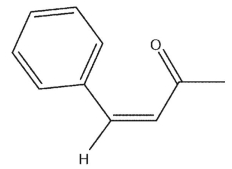
A) ![]()
B) ![]()
C) ![]()
D) ![]()
E) ![]()
Correct Answer

verified
Correct Answer
verified
Essay
Predict the product of the following reaction. 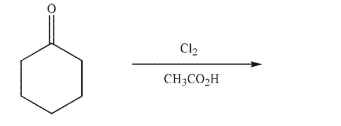
Correct Answer

verified
Correct Answer
verified
Essay
Design a multistep synthesis of the target molecule from the indicated starting material.Show the
reagents needed for each step and the product of each step.Do not show any mechanisms. 
Correct Answer

verified
Correct Answer
verified
Multiple Choice
What is the product of the following reaction conditions? 
A) ![]()
B) ![]()
C) ![]()
D) ![]()
E) None of these is the product of the conditions shown.
Correct Answer

verified
Correct Answer
verified
Multiple Choice
Which of the following structures will have the greatest amount of enol content at equilibrium?
A) ![]()
B) ![]()
C) ![]()
D) ![]()
E) ![]()
Correct Answer

verified
Correct Answer
verified
Essay
Devise a multistep synthesis for the following transformation.Show the reagents needed for each
step and the product of each step.Do not draw any mechanisms. 
Correct Answer

verified
Correct Answer
verified
Essay
The ester shown here cannot undergo a successful Claisen condensation.Explain why. 
Correct Answer

verified
Overall, the steps in a Claisen condensa...View Answer
Show Answer
Correct Answer
verified
View Answer
Showing 41 - 60 of 71
Related Exams